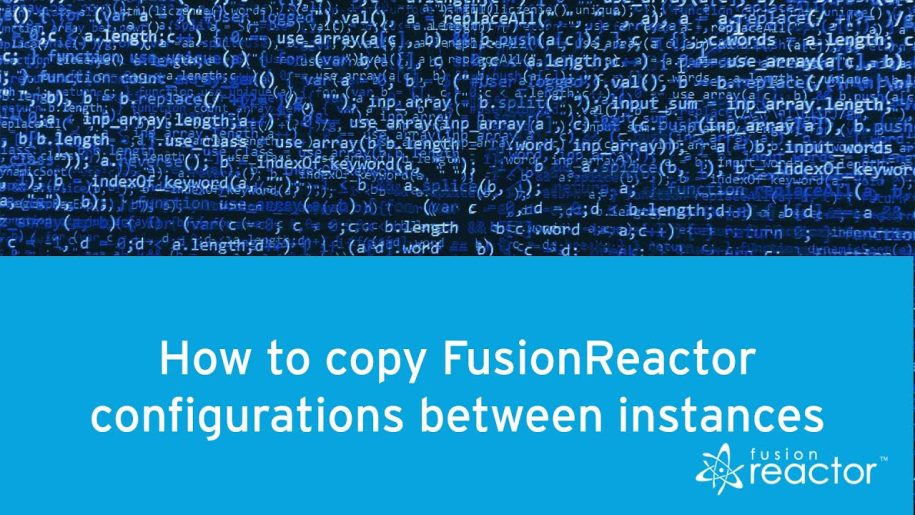Copying configurations between instances is important for anyone wanting to deploy multiple copies of FusionReactor. Whether this is done via scripting, virtualization, or installing FusionReactor on each server manually. It allows you to have an instance with pre-configured settings like user management, email, slow request limits, crash protection alerts, and more without the need to set up the instances.
In order to generate a reactor.conf file with the settings you require, you should configure one instance using the User interface of FusionReactor.
FusionReactor stores its settings in a single file called the reactor.conf file. This file is located within the conf directory of the instance and is safe to copy between instances, which allows you to deploy the file without requiring any modifications.
Things To Consider
If you want to apply a pre-configured configuration file, there are a few things that must be considered:
1. The file must be placed when the application server is not running, otherwise, the file may be stomped over.
2. The file must be read writeable by the user running the application server.
Steps
Within my tomcat instance, I have preconfigured settings, to demonstrate how simple cloning the configuration is. I can now copy this configuration into a ColdFusion instance.
The first thing to do is locate the configuration file, which we can do by going to our instance directory, then conf. In the file, I have a few settings such as email, user logins, and request history settings.
The next thing I need to do is stop my ColdFusion server so it is safe to replace the file. With ColdFusion stopped, I can now copy the configuration file into my ColdFusion instance directory.
And finally, we can restart ColdFusion and the settings will be applied.
That’s all we need to do to copy a configuration file in FusionReactor










